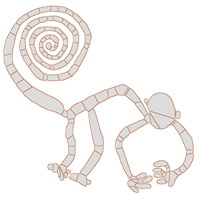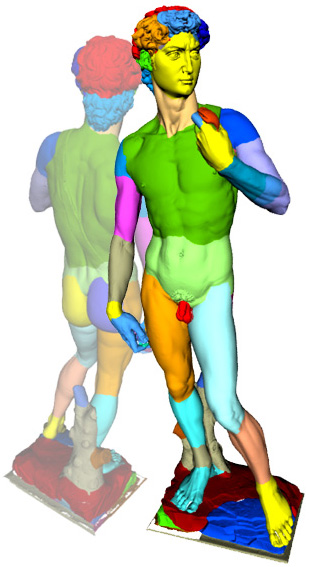Approximate Convex Decomposition of Polyhedra, Jyh-Ming Lien, Nancy M. Amato, In Proc. of the ACM Symposium on Solid and Physical Modeling (SPM), Beijing, China, June 2007, to appear. Also, Technical Report, TR06-002, Parasol Laboratory, Department of Computer Science, Texas A&M University, Jan 2006.
Proceedings (pdf) Technical Report (pdf)
Approximate Convex Decomposition and Its Applications,
Jyh-Ming Lien, Ph.D. Thesis, Department of Computer Science, Texas A&M University, Dec 2006.
Ph.D. Thesis(pdf)
Simultaneous Shape Decomposition and Skeletonization, Jyh-Ming Lien, John Keyser, Nancy M. Amato, In Proc. ACM Solid a
nd Physical Modeling Symp. (SPM), pp. 219-228, Cardiff, Wales, UK, Jun 2006. Also, Technical Report, TR05-015, Parasol Laboratory, Depa
rtment of Computer Science, Texas A&M University, Dec 2005.
Proceedings (pdf) Technical Report (ps, pdf)
Approximate Convex Decomposition of Polygons, Jyh-Ming Lien, Nancy M. Amato, Computational Geometry: Theory & Applications, To appear:2005. Also, In Proc. ACM Symp. Comput. Geom., pp. 17-26, Brooklyn, New York, Jun 2004. Also, Technical Report, TR03-008, Parasol Laboratory, Department of Computer Science, Texas A&M University, Dec 2003. Also, Technical Report, TR03-008, Department of Computer Science, Texas A&M University, Texas, Jun 2003.
Journal (ps, pdf) Proceedings (ps, pdf)
Approximate Convex Decomposition, Jyh-Ming Lien, Nancy M. Amato, In Proc. ACM Symp. Comput. Geom., pp. 457-458, Brooklyn, New York. Video Abstract, Jun 2004. Also, Technical Report, TR03-001, Department of Computer Science, Texas A&M University, Jan 2003.
Proceedings (ps, pdf) Technical Report (ps, pdf)
|





